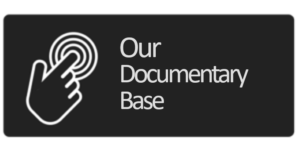According to the results of a recent study published in early 2018 by Opinion Way for QBE, French medium-sized company leaders are increasingly taking risk management into account. However, 65% of these same managers admitted that risk management in their own businesses was not yet completely controlled. In this article, we provide you with the fundamentals about insurance policies which play a key role when it comes to risk hedging.
What are the essential professional insurance policies?
The only mandatory insurance policies are those covering a company premises and vehicles. Some more specific and optional policies can be subscribed to cover your premises against specific risks. This type of insurance allows you to cover your company’s properties while ensuring your civil liability. Usually, professional premises are covered against disasters (water damage, storm, hail, explosion, electrical damage and fire) and against vandalism. Your equipment is protected against breakage, theft, and in some cases against breakdown and failure. Professional liability covers you if an officer, a worker or goods owned by the company causes a material or immaterial bodily injury to a third-party. Professional liability may as well cover compensation or damage in the event of malpractice or negligence and is mandatory and regulated in several fields of activity such as council, law, health and construction. Other specific activity-related guarantees are also compulsory, like the decennial insurance for craftsmen. In any case, multi-risk policies participate in securing and simplifying the activity-related risk management process within a company. For example, in the event of the insurance guarantee being put into play, the financial risk would be equal to the amount of the deductible.
Which additional guarantees can extend my risk hedging?
Besides the basic guarantees of a multi-risk insurance, several additional options are available to improve your protection against specific risks. Subscribing to such optional policies is essential to achieve a higher level of risk management in your company. As an example, the basic multi-risk insurance only offers a third-party coverage for company vehicles. It is therefore interesting to subscribe to optional policies covering driver’s physical injuries, theft, breakage, glass breakage, and even transported goods, for a fuller protection of your professional vehicles. In recent decades, insurance companies had been developing new options to adapt to the evolution of the business world. It is now possible to subscribe to a specific policy protecting you against information risks and preventing you from the loss of production days in case of software or hardware failure. Moreover, optional insurances offer you a protection against a rising threat: cybercrime. According to PWC’s annual survey on fraud and economic crime, cybercrime is the second most important economic crime and affected 32% of businesses around the world in 2017. In addition to computer security features, it is recommended to subscribe to an insurance that covers hacking, virus contamination or cyber-scams. Another recently emerged risk is the climate risk. A 2014 study lead by the French Atomic Energy and Alternative Energy Commission (CEA) forecasts a 38% increase in the cost of climate claims over the next 25 years. Moreover, as operating losses as not covered by a basic multi-risk insurance policy, protecting your activity against climate risk seems to be important if not essential.
How to properly manage my existing policies?
Once policies are agreed and subscribed, it is the manager’s responsibility to track and monitor the running contracts. As insurance policies are often indexed to the company’s turnover and number of employees, your insurer has to be informed of any changes or evolution of your business activity, as well as of any vehicle or machine purchase, and premises extension, in order for the contract to be updated. Should this not be the case, your company may not be compensated for the real value of its assets in the event of harm.
In addition, an efficient insurance policies management requires a control of the risk / cost ratio. Guarantees offered by the multi-risk insurance are more important than the multi-risk policy itself: depending on your company’s activity and the number of options to which you are willing to subscribe, it may be financially interesting to subscribe to several risk-specific policies separately. Carrying out a benchmark on a regular basis can also help you reducing your insurance expenses.
In conclusion, insurance policies represent a key pillar when it comes to risk management. As a business leader, it is essential to ensure that your insurance policy covers not only general risks, but also the more specific ones related to your activity, to reduce your business exposure to the numerous hazards of the business world.





